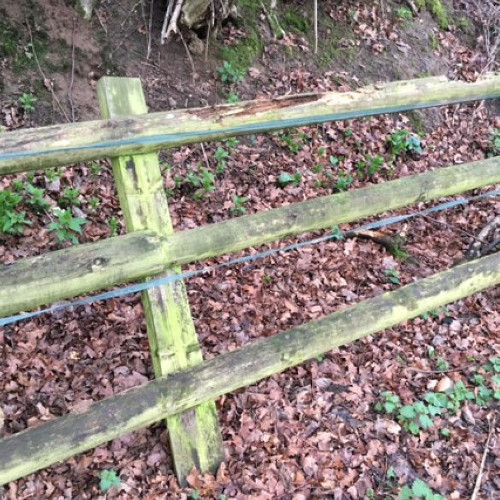
Change in regulations
Many of us have been there, on a windy day we arrive home at the end of a long day to find our fence has fallen down! Either that or wake up in the morning and discover a view of the next door neighbours garden that wasn’t there the night before. Puts a slight dampener on things, doesn’t it!
Well, it’s a more common issue these days than it ever was in years past. Of course, wooden fence posts, no matter what you do will not last forever, but from working inside the industry I can tell you that the treatment used in the production of fence posts is no longer formulated as it was a generation ago, due to regulation changes it was banned in early 2000’s in domestic and household applications in part due to the environmental and health implications of the Chromium and Arsenic elements in particular. Removal of Chromated Copper Arsenate (CCA) from the production process followed. Now the rights and wrongs of this can be debated in depth, but it doesn’t change the fact that the treatment alone is not singularly as effective against rot anymore. So the big question is, what can we do to get round this issue? Well, here I’ll outline some of the steps anyone can take to help this issue when installing a new fence.
UC4 Timber Posts
The first option we have as consumers is to simply upgrade our fence posts. There you go … simple! At Briants we stock UC4 posts (User Class 4), which sounds a bit fancy and technical. Our timber suppliers will take the timber post and kiln dry it down to 28% moisture content or below. Because the wood is so much drier than usual, more treatment is able to be absorbed into the timber deep up to the heartwood. The price difference is approximately 20% over that of it’s basic Softwood Treated equivalent, negligible in the scheme of putting up a new fence and the significant lifespan. For example, at the time of writing, an 8ft (2.4m) long, 3inch (75mm) square post has a price difference of around 63p per post! A no brainer when a UC4 post has an expected service life of 15 years. So, to install 10 3 x 3 posts would cost around an extra £6.30 to upgrade all the posts. YES, I SAID £6.30!! Take my advice, if you are using wood rather than concrete, ask for UC4 posts.
Concrete Posts
This brings me very neatly onto the next option – using concrete posts. This is a very popular option nowadays as they clearly won’t rot. From an installation point of view they are heavier than timber posts so a little more cumbersome to move around site and worth having an extra pair of hands to make life easier, but that being said the weight isn’t excessive and modern production methods have allowed for lighter versions. The cost is greater than wooden posts, as you would probably expect, but for peace of mind and with longevity, concrete may be the perfect option. If using conventional fence panels they also offer convenience once the panels need replacing, the H profile slotted posts mean that you can simply lift out the worn or damaged panels and slot in new ones.
Whilst on the subject of concrete, I’ll just mention our concrete repair spurs. These are typically used for repairing broken wooden posts. They essentially form a brace against the side of the wooden post, removing the necessity to dig out and replace the entire post and panel. For customers installing from new who would prefer a fully timber fence, but with the added insurance of having a concrete brace at the bottom of each post, simply position each post one at a time and secure a repair spur to the post using 2 coach screws. Then use postcrete to fix it in place as normal. This way, even if the post does eventually rot at ground level, the concrete spur will hold it up, so it’s essentially there to stay.
Metal DuraPosts
Last of all is a new product to the market. The DuraPost range of lightweight metal fence posts, which offers the longevity of concrete but some would say more aesthetically pleasing, easier to handle and available with matching composite gravel boards and post caps.
Just a little bit of forward planning and knowledge at the installation stage can save you a lot time and money a few years down the line. Take my word for it as I’ve been there myself and learned the hard way, as well as seeing it happen to countless customers, spend a little more now and you’ll benefit later on.
